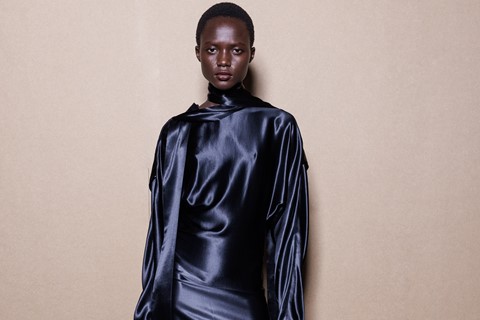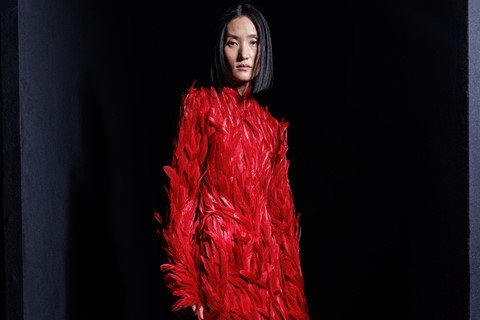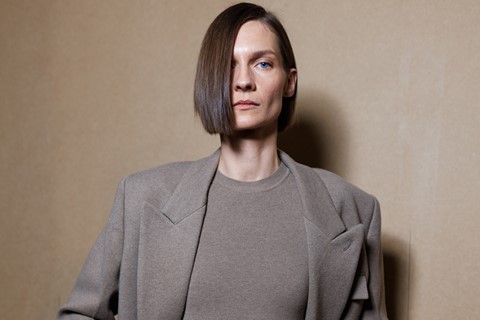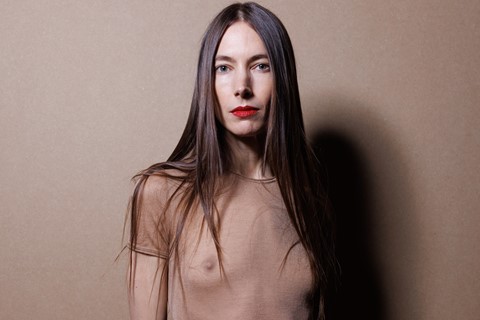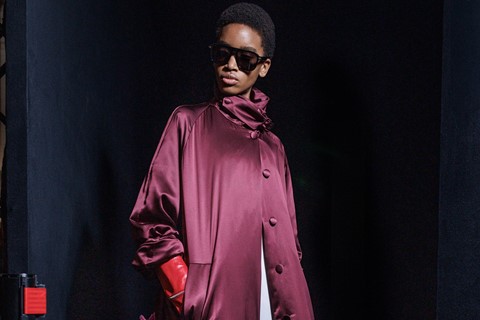There’s something about the work of the ground-breaking German choreographer Pina Bausch – its raw physicality, its abstraction and of course its accompanying swirling movement of cloth – that continually fascinates fashion designers. There’s an obvious link between her own performances – their integrated sound and spatial design, and dervish whirling motion – and the ballet of the fashion show, its progressive movements, storytelling through the passage of body and fabric. Plus, Bausch herself looked great. She’s been a touchstone for a whole bunch, and this season Maximilian Davis decided to evoke her at his Ferragamo show.
He said it, first of all, with flowers. Davis’ models stomped through a drift of thousands of thickly strewn red rose petals, a direct reference to Bausch’s work Der Fensterputzer (The Window Cleaner) where dancers writhe in piles of poppies. It was first staged in 1997, when Davis was only two years old, but he didn’t let his tender age limit him; the collection itself glanced back even further, to the 1920s origins of the neo-expressionist dance movement, as well as to Bausch’s 1980s works. There were references to her costumes, and even direct nods to her own dress – a ballet-slipper satin negligee dress, for instance.
The 1920s is a period that seems to draw designers right now – presumably because we are living through that decade again, and because unlike the corsets and trailing skirts of the last century’s preceding decades, its clothes can still be worn today without seeming (too much) like costume. For Davis, the 1920s lead to the idea of surrealism, to displacement. “The surrealist idea of taking everyday objects and making them feel a little disturbed is something I feel very interesting,” he stated before the show. “Creating a sense of discomfort in the expected.”
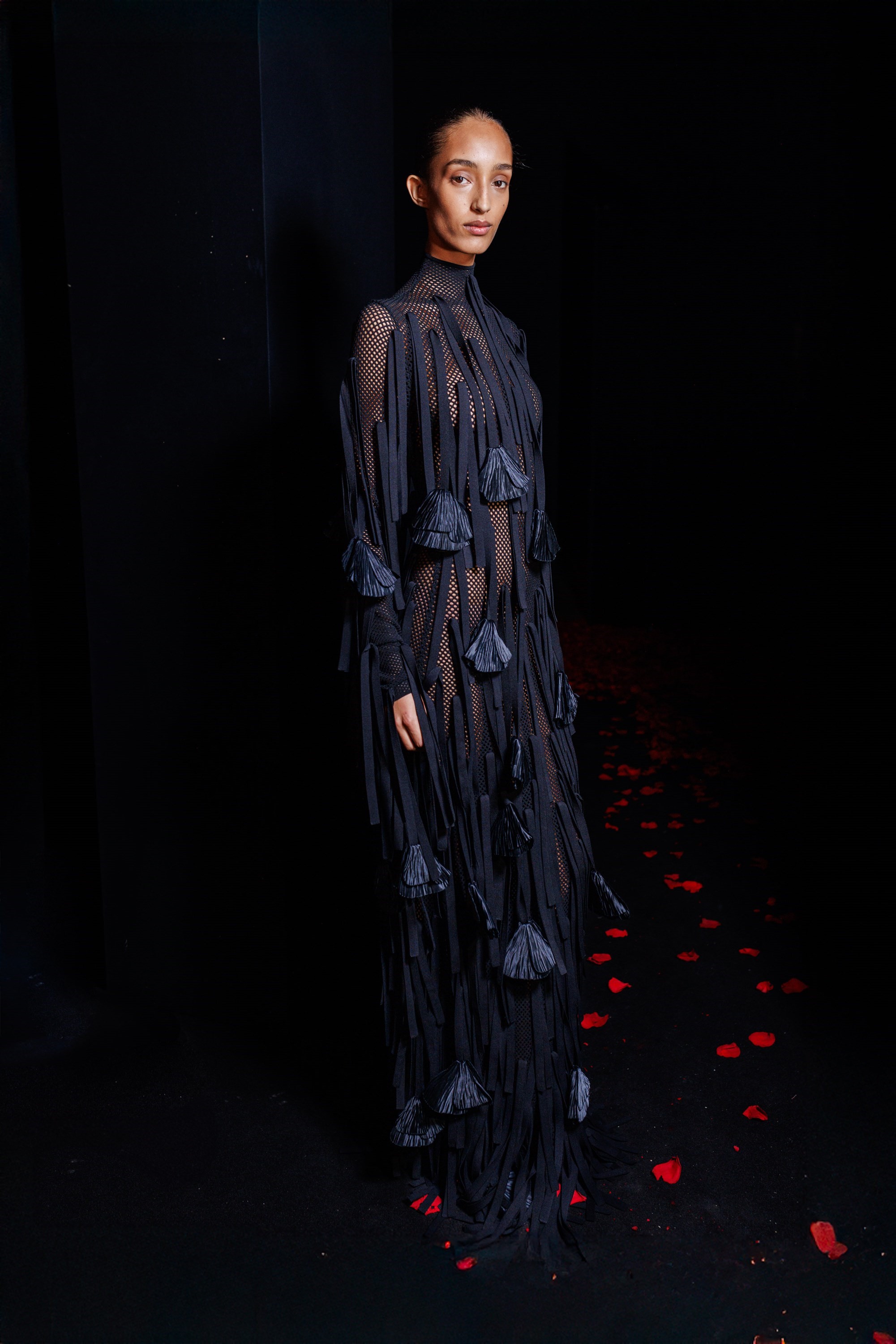

How to do that at a luxury Italian brand? How about taking your status handbag – the ‘Hug’, named after the embracing bands of leather wrapping its front – and transposing it to other parts of the body? Davis made a song and dance about that, reworking the bag into twin panniers that sat on the hips, and using it to form nice fat pockets, punctuating the form of coats and jackets, hardware details glistening. It reminded you, of course, of Elsa Schiaparelli and her collaborations with Salvador Dalí – namely a suit where the pockets were replaced with drawers, based on the ‘Anthropomorphic Cabinet’ he painted in 1936, and like Bausch an investigation of the extremes of the bodily. Whatever the impetus, those looked great.
Elsewhere, in Bausch’s expressionist, corporeal palette of fleshy pinks and tan, viscera red, bone and black, Davis mingled luxury with bodily expression. Think: Dario Argento’s Suspiria goes to a couture show, with slick tailoring and sleek evening dresses, ramrod men’s coats tossed over slithery slips, and tailoring in industrial charcoals. The petals on the floor also seemed to influence the treatments of surface, a cocktail dress smothered in scarlet feathers standing on end, and others dripping with laser-cut flowers as if tossed on a performer at their encore curtain call.
Davis is clever – since he took over in 2022, he has grabbed Ferragamo by its shoelaces and shaken it to produce something fresh and new. Dance is a fitting theme for Ferragamo – their bestselling shoe is the ‘Zina’ ballerina flat – but this iteration seemed about the steely core strength you need, rather than the delicacy and fragility of its outside appearance. What an apposite metaphor for fashion, too. All that red on the runway reminded you of one thing: dance and fashion both take guts.

